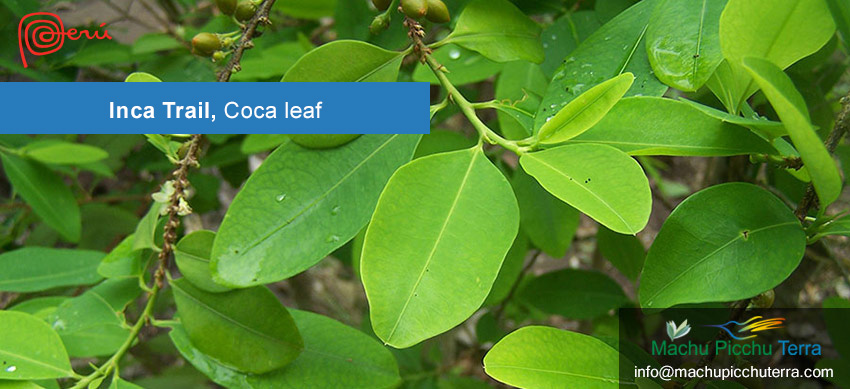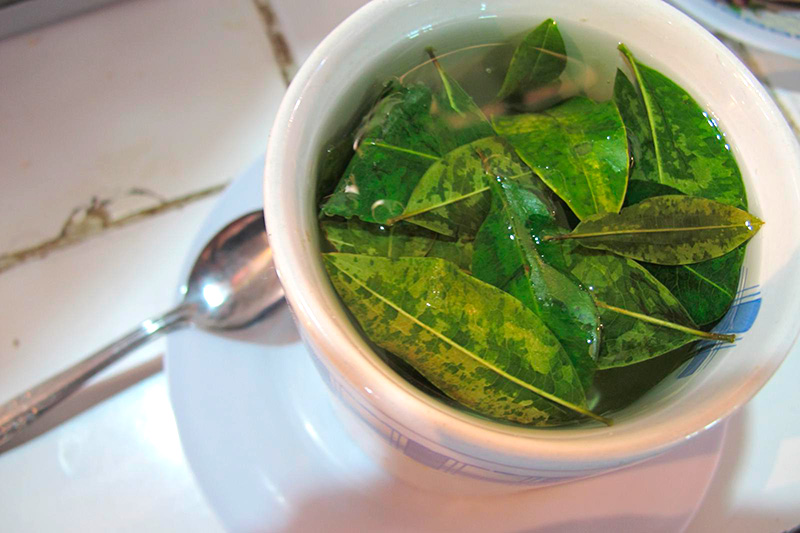
This important plant was considered sacred to the Incas. Today it is still consumed by a large part of the Peruvian population. It is also recommended for travelers who have just arrived in Cusco from areas near the sea. Altitude sickness can be avoided or alleviated thanks to the properties of the coca leaf. Learn more about this beautiful and delicious leaf.
Coca leaf
The coca leaf is one of the most important plants in all of Peru and in some of its bordering countries such as Bolivia, Ecuador, and Colombia. The coca leaf is obtained from a type of bush that can grow up to 2.5 meters high. It has leaves in the shape of ellipses of 5 to 7 centimeters. There are records that the human beings of the mentioned territories consumed the coca leaf more than 9,000 years ago. Nowadays, its consumption is advised to avoid altitude sickness and other ailments that may occur when arriving in Cusco.
Properties of the coca leaf
The main property of the coca leaf is that it serves as an energetic substance. This seemed to be a myth or belief but was verified by modern studies. Among its main compounds found in alkaloids, alkaloids serve as stimulants that provide physical strength and leave the feeling of satiety. Another compound that it possesses in large quantities is iron. According to some studies, you can also find a portion of protein, for every 100 grams you can find 19.8 grams of protein.
The vitamins found in the coca leaf are B and C, these vitamins help stabilize blood sugar levels. This gives it an invigorating function. It also relaxes muscles and improves circulation and breathing. It is vital for those who feel suffocated in places of high altitude. It is very useful for those who suffer from altitude sickness or soroche.
The coca leaf also increases the PH of the blood, which helps to combat some gastric disorders, such as indigestion or constipation, and even some pains caused by cold. It contains antibacterial and analgesic properties. All these benefits and properties of the coca leaf make it an ideal food for those who decide to travel to Cusco or trekking routes for several days. Remember that most destinations in the Peruvian Andes are more than 2,500 meters above sea level. At this altitude, you can already feel some symptoms of altitude sickness. Thus, the coca leaf becomes important for all its benefits, do not hesitate to try it. They also help us to understand the symbolic value that the coca leaf had during the time of the Incas.
What value did the coca leaf have for the Incas?
The coca leaf was considered sacred by all the inhabitants of the Tawantinsuyo. One of the main uses they gave them was in religious ceremonies and the other was as an invigorating plant. From long before the Incas until today, the coca leaf is still consumed, although nowadays it has many more presents such as cookies, candies, and more.
During the Inca period, coca leaves were produced with great care, especially if they were to be dedicated to the Inca or the sun god. It is said that special care was taken to maintain the green color of the leaves, which certified the quality of the crop. This special care gave a strong importance to this product.
According to National Geographic, the coca leaf was used as a means of payment or reward, to the extent that it was on a par with gold and silver. When a cacique or a chief finished a construction project or a captain achieved a great feat, the reward consisted of precious metals, fine textiles, and especially large baskets filled with coca leaves. The Inca Garcilaso de la Vega also mentions in his Comentarios Reales de los Incas, the following: “For her, they postpone gold and silver and precious stones”. Of course, the majority of the population and the elites themselves would prefer something beneficial to their health.
It is believed that the consumption of coca leaf was limited to the consumption of the elites, however, the leaves that reached them were finely selected. For this reason, large fields were created exclusively for coca leaf cultivation. The damaged leaves surely fell for the consumption of the population. However, it is estimated that during the colonial period, the production of this leaf was massified to be used as a nutritional supplement to the food deficit for the entire population. Whatever the case may be, it is still consumed by a large part of the population today.
How can I consume it nowadays?
The coca leaf continues to be consumed by many people, especially in the high Andean areas of Peru, Colombia, Ecuador, and Bolivia. It is common to find its sale in the markets. However, thanks to different processes, coca leaves can be found in infusions, candies, cookies, and some pills.
Some hotels and tourist restaurants also offer it in small baskets in the center of a table or the waiting room. The ideal is to consume the leaves directly, take a certain amount, and chew them gently so that they gradually secrete their nutrients.
The ideal way to consume it is by following an almost ceremonial procedure. It starts with a salute, you choose 3 of the best leaves and make a cluster and with both hands, you raise them to blow on them 3 times. Once this is done, you can start to consume them. This small venia is a form of gratitude to the sun and other Andean deities such as the mountains and rivers. This procedure is known as the Kintu.
The Kintu, which is performed by many people, is that the coca leaf is not only used for consumption but also to make Andean religious ceremonies. You will always find coca leaves in rituals of gratitude to the earth, in rituals of cleaning the rivers, in the Inti Raymi, and in many activities related to giving thanks to nature.

Coca tea
Is the coca leaf related to cocaine?
Cocaine is a product derived from the coca leaf along with other ingredients. This product is an extremely addictive stimulant as it has immediate action on the brain. It is one of the drugs that can be marketed massively and in a short time. It is currently a Schedule II drug under the Controlled Substances Act.
Remember that it is illegal to bring cocaine into Peruvian territory or to commercialize it. Coca leaves can be traded legally as long as they are not exorbitant amounts. In case you are in Peru and do some of its trekking routes such as the Inca Jungle, Inca Trails, or Salkantay Trek; we recommend its consumption. You can find the coca leaf in candies, cookies, pills, in infusions and the best option is the coca leaf itself that you can chew.
By Inca Trail Machu Picchu - Last updated, 22-08-2024
Interested in the Inca Trail? Know more about Nature!
- The Cantuta flower. Where to find it on the Inca Trail?
- Fauna of the Inca Trail
- Spectacled bear on the Inca Trail to Machu Picchu
- The cock of the rocks on the Inca Trail
- Inca Trail: butterfly observatory
- Warmiwañusca Mountain Pass
